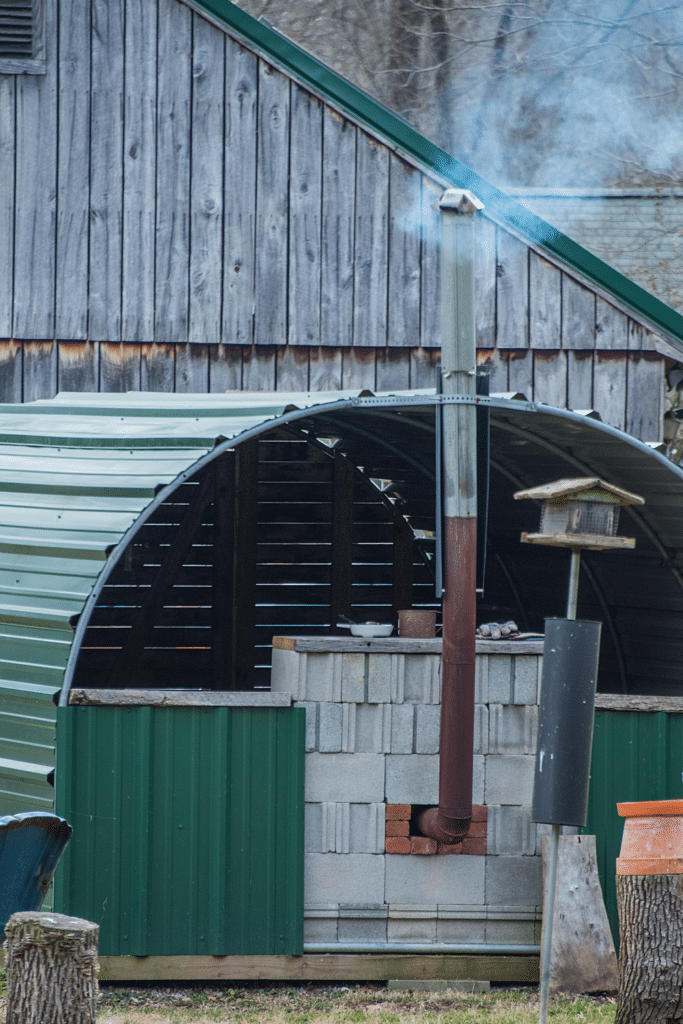The Magic of Maple

The Magic of Maple
Have you ever wondered about the origin of maple syrup? Before it was that sweet, sticky, delicious flavor puddled on your favorite breakfast dish—before it was bottled on a shelf in the store—before it was boiled down into a more sugary liquid—before it was dripping into a bucket—back when it was just a watery sap, flowing in a maple tree in the forest. You may have heard of some stories of how people discovered and came to use maple sugar: a sap surprise from a tomahawk into a tree; observing animals licking sap from holes in trees. There are many versions of stories and myths, but they all revolve around the relationship between humans and trees.
The first part of this relationship is getting to know your trees, specifically the sugar maple. At a glance, the tall, drab-colored trees all look the same during the leafless, winter months. Many maple trees have a somewhat pinkish hue, but the bark and color change depending on age. If you’re new to maple tapping, we recommend planning ahead and identifying your trees when they have their leaves or buds-it’s much easier! Once you have found your sugar maple trees on your land, it’s important to keep the trees healthy, because healthy trees are happy, sap-flowing trees. A few key tips to keep your trees healthy are: a tappable tree must have at least a 10 inch diameter (the size of a basketball); sanitize your equipment; mark your drill with tape at 2 inches to make sure your hole is the right depth; spread out tap holes so the old ones can heal.
Maple season relies on optimal sap flow, which happens when there are freezing temperatures at night and above freezing during the day. We all know Ohio weather keeps us guessing, so this temperature pattern can occur anywhere from January to March. Our animal friends like ants, flying squirrels, or woodpeckers will lap up sap straight from the tree. You may find yourself doing the same after you encounter sap dripping out of the spile of your first tapped maple tree. However, it’s actually only 2% sugar and 98% water! The key to making syrup is concentrating the sugar, and this is done by removing water through evaporation. Humans have used a number of tools over the centuries to boil down the sap- from hot stones in a carved out log, to metal pots over an open fire, to our modern day evaporators.
At Greenacres, we use a small-scale evaporator in our ‘sugar shack.’ The evaporator is fueled by a wood-burning stove, kept as full and hot as we can get it. We haul our buckets of sap from the maple trees and pour them into the evaporator. As you can imagine, it takes quite a bit of sap for the water to evaporate and turn from 2% sugar to approximately 66% sugar. In fact, it takes 40 gallons of sap to create 1 gallon of maple syrup! It also takes a lot of time and effort for the whole process, but luckily it involves the sugar shack.

Can’t you just smell the heavenly scent wafting around the sugar shack? It is one of the best wintertime experiences that we can think of. The cozy warmth of the fire, steamy room, and sugar molecules dancing under your nose simultaneously trigger your brain into daydreams of maple cookies, pancakes, and drizzled maple popcorn.
What a special relationship and process, straight from the trees. If you don’t want to dabble in your own maple tapping, come to the Greenacres Farm Store and try the syrup we make from our trees. It is available each year typically between late February to early March. Thank a maple tree the next time you see one!
